### What is On-Page SEO and Why is it Important?

On-Page SEO refers to a set of techniques and actions you perform within your website to improve your site’s ranking in search engine results like Google.
This includes optimizing content, site structure, HTML tags, and other internal site elements.
The importance of on-page SEO is that it helps search engines better understand your site’s content and recognize its relevance to user searches.
A strong on-page SEO strategy means more visibility, attracting targeted traffic, and ultimately increasing conversion rates.
In fact, on-page SEO forms the foundation of any successful SEO strategy.
Simply put, on-page SEO makes your site more attractive to search engines and more useful to users.
Many businesses use digital marketing to develop their business.
Research shows that 80% of customers trust companies with professional websites more. Does your current site inspire this trust?
With Rasaweb’s corporate website design services, solve the problem of customer distrust and weak online image forever!
✅ Create a professional image and increase customer trust
✅ Attract more sales leads and grow your business
⚡ Get free consultation
Keyword Research; The First Step in On-Page SEO
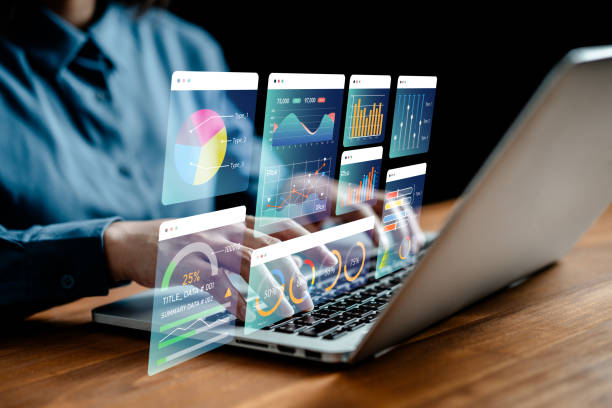
Keyword research is one of the most important steps in on-page SEO.
This process involves identifying the words and phrases that users search for in search engines to find information related to your business.
The goal of keyword research is to find words that have both high traffic and are relevant to your site’s content.
You can use various tools such as Ubersuggest, Ahrefs, and Google Keyword Planner to perform keyword research.
After identifying the appropriate keywords, you should strategically use them in your site content, title tags, meta descriptions, and other optimized elements.
Remember that excessive use of keywords (Keyword Stuffing) can harm your site’s ranking, so you should strike a balance and create natural and valuable content for users.
On-page SEO without proper keyword research is like building a house without a map.
Content Optimization; The King of On-Page SEO
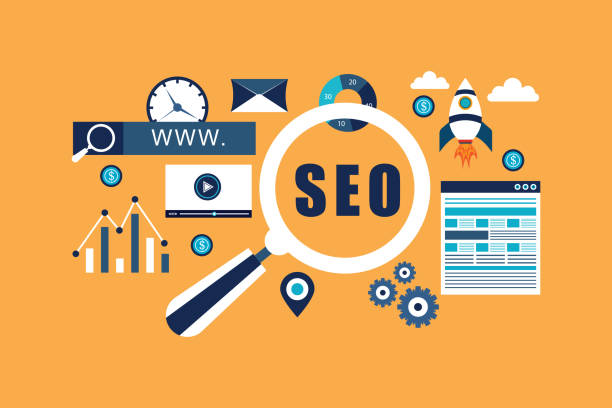
Content is king! This phrase is often heard in the world of on-page SEO.
High-quality, engaging, and relevant content to users’ needs is one of the most important factors in ranking your site in search engines.
To optimize content, you need to make sure that your content provides users with complete and accurate information, answers their questions, and meets their needs.
Also, your content should be easy to read and understand.
Using subheadings, short paragraphs, and appropriate images can help improve content readability.
In addition, you should use your target keywords naturally in your content.
Also, try to update your content regularly to keep it fresh and relevant.
For this purpose, on-page SEO should be continuously reviewed and updated.
| Factor | Description |
|---|---|
| Content Quality | Valuable, accurate, and comprehensive content |
| Readability | Use of subheadings, short paragraphs, and images |
| Keywords | Natural and relevant use of keywords |
Optimizing Title Tags and Meta Descriptions

Title Tags and Meta Descriptions are important elements in on-page SEO that help search engines understand the content of your pages and display them correctly in search results.
Title tags are the main title of your page that appears at the top of the browser and in search results.
Meta descriptions are a short summary of your page’s content that appears below the title in search results.
To optimize title tags and meta descriptions, you should use your target keywords, write them attractively and relevant to the page content, and keep their length within the permitted range (about 60 characters for the title tag and 160 characters for the meta description).
A good title tag and meta description can increase your site’s click-through rate (CTR) in search results and drive more traffic to your site.
On-page SEO helps you optimize your site’s tags.
Are you worried that your company’s old website will drive away new customers? Rasaweb solves this problem with modern and efficient corporate website design.
✅ Increases the credibility of your brand.
✅ Helps attract more targeted customers.
⚡ Contact Rasaweb for a free consultation!
URL Structure; SEO Friend

The URL structure is another important factor in on-page SEO that helps search engines better identify and rank your site’s pages.
Your site’s URLs should be short, readable, and contain keywords relevant to the page’s content.
Avoid using long, complex URLs with unnecessary characters.
Also, try to use a hierarchical URL structure so that the relationship between different pages of your site is well defined.
For example, instead of using a URL like `example.com/page123.html`, use a URL like `example.com/blog/seo-internal`.
An optimized URL structure is not only useful for search engines, but also improves the user experience and helps users navigate your site easily.
Correct use of on-page SEO will greatly help you in structuring your site.
Image Optimization; Beyond Image SEO
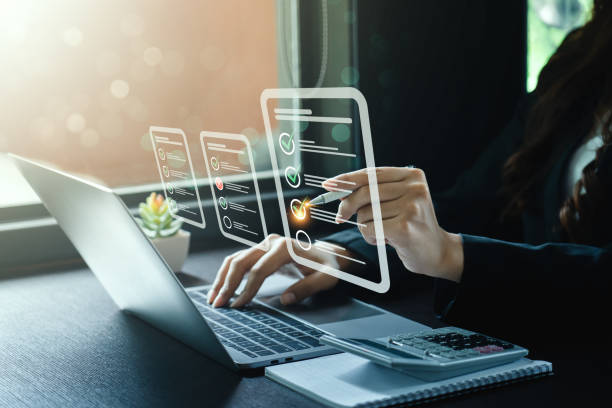
Image optimization is an important aspect of on-page SEO that is often overlooked.
Images can help with the visual appeal of your content, improve the user experience, and drive more traffic to your site.
To optimize images, you should use high-quality images that are relevant to the page content, reduce the size of the images to increase page loading speed, use Alt Text to describe the images, and choose the file names of the images appropriately.
Alt text helps search engines understand the content of images and index them correctly.
Also, Alt text is very useful for users who use screen readers.
Image optimization not only helps with on-page SEO, but also improves the accessibility of your site.
Internal Linking; Site Navigation

Internal Linking refers to creating links between different pages of your site.
Internal linking helps search engines better understand your site’s structure, identify more important pages, and distribute authority (Link Juice) between different pages.
Also, internal linking helps users navigate your site easily and discover more information.
For internal linking, you should use appropriate Anchor Text, create links to relevant pages, and keep the number of internal links on each page balanced.
Avoid over-linking to a particular page.
Internal linking is a main pillar of on-page SEO, and a cohesive site greatly helps your site’s SEO.
| Advantage | Description |
|---|---|
| Improved Navigation | Guiding users on the site |
| Authority Distribution | Transfer of authority between pages |
| Easy Discovery | Helping search engines discover new pages |
Site Loading Speed; A Vital Factor
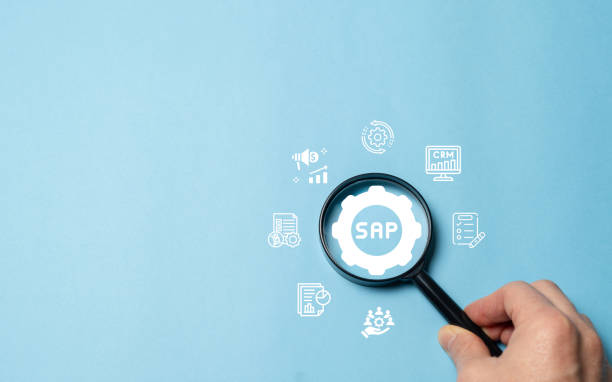
Site loading speed is one of the most important ranking factors in search engines.
Users expect your site pages to load in a few seconds.
If your site is slow, users will leave it and go to other sites.
Slow site loading speed not only affects the user experience, but can also harm your site’s ranking in search engines.
To improve site loading speed, you can use various techniques such as image optimization, Gzip compression, using CDN, and reducing the number of HTTP requests.
Tools like Google PageSpeed Insights and GTmetrix can help you evaluate your site’s loading speed and identify problems.
Site loading speed is a fundamental topic in on-page SEO.
There are many ways to optimize website performance.
Are you losing potential customers due to an unprofessional website? Rasaweb is your answer! With our specialized corporate website design services:
✅ Enhance the credibility and position of your business
✅ Experience attracting more targeted customers
⚡ Act now to receive a free consultation!
Responsive Design; Mobile Compatibility
![]()
Today, more than half of web traffic comes from mobile devices.
Therefore, having a Responsive site that displays correctly on different devices is very important.
Responsive design means that your site automatically adjusts to the screen size of the user’s device.
A responsive site not only improves the user experience, but also helps your site’s ranking in search engines.
Google prioritizes sites that are mobile-friendly.
To ensure that your site is responsive, you can use Google’s Mobile-Friendly Test tool.
Non-responsive sites do not have much chance in on-page SEO.
Monitoring and Measurement; The Key to Continuous Improvement
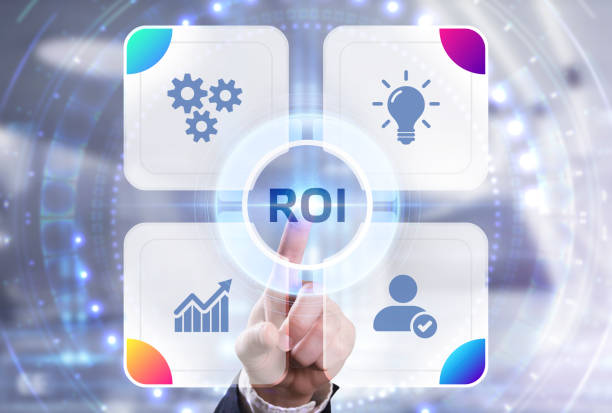
On-page SEO is an ongoing process and requires monitoring and measurement.
You should regularly check your site’s performance in search engines, analyze your site’s traffic, and make the necessary changes to improve your site’s ranking.
Tools like Google Analytics and Google Search Console can help you gain valuable insights into your site’s performance.
Using this information, you can identify the strengths and weaknesses of your site and optimize your on-page SEO strategy.
Remember that on-page SEO is an iterative process and requires patience and perseverance.
With continuous monitoring and measurement, you can gradually improve your site’s ranking in search engines and drive more traffic to your site.
As a result, on-page SEO leads to the development of your business.
Frequently Asked Questions
| Row | Question | Answer |
|---|---|---|
| 1 | What is On-Page SEO? | On-page SEO refers to a set of actions that are performed within the website (on its pages) to improve the site’s ranking in search engine results. This includes optimizing content, site structure, and HTML codes. |
| 2 | Why is On-Page SEO important? | On-page SEO helps search engines to better understand the content of the page and to determine whether that page is relevant and valuable for user search or not. This better understanding leads to a higher ranking. |
| 3 | What is the first and most important step in On-Page SEO? | Keyword Research is the most important initial step. By finding the right keywords, targeted content relevant to the needs of users can be produced. |
| 4 | What is the role of the Title Tag in On-Page SEO? | The title tag is one of the most important ranking factors and should include the main keyword. This tag is displayed in search results as the title of the page and affects the click-through rate (CTR). |
| 5 | What is the importance of Meta Description? | Meta description does not directly affect the ranking, but by providing an attractive summary of the page content in search results, it can encourage users to click and thus increase the click-through rate (CTR). |
| 6 | Why is using headings (H1, H2, etc.) important in content? | Headings help to structure the content and improve readability for users and search engine crawlers. Using keywords in headings also helps the search engine to better understand the topic. |
| 7 | What does Image Optimization in On-Page SEO include? | Includes compressing images to reduce size, using descriptive and relevant file names, and filling in the Alt tag (alternate text) with relevant keywords to help search engines understand the content of the image. |
| 8 | What is meant by Internal Linking in On-Page SEO? | Internal linking refers to creating links between different pages of a website. This helps to spread page authority (Link Equity), improve user experience and help search engine crawlers to discover new pages. |
| 9 | Why is Page Speed important for On-Page SEO? | Page load speed is a direct ranking factor and greatly affects the user experience. Slow pages can increase the bounce rate and decrease user engagement. |
| 10 | What role does quality content play in On-Page SEO? | Quality content, comprehensive, unique and valuable for the user, is the core of on-page SEO. This content not only attracts and retains users, but also sends positive signals to search engines and helps to rank better. |
And other services of Rasa Web advertising agency in the field of advertising
Smart Social Media: A creative platform to improve sales growth with precise audience targeting.
Smart Advertising Campaign: A new service to increase the click-through rate through SEO-based content strategy.
Smart Customer Journey Map: A fast and efficient solution to increase website traffic by focusing on SEO-based content strategy.
Smart Digital Advertising: An effective tool for managing campaigns with the help of optimizing key pages.
Smart Social Media: A new service to increase user engagement through SEO-based content strategy.
And more than hundreds of other services in the field of Internet advertising, advertising consulting and organizational solutions
Internet Advertising | Advertising Strategy | Reportage Advertisement
Sources
What is On-Page SEO?
,On-Page SEO Guide
,What is On-Page SEO?
,On-Page SEO Training
? Are you ready to take your business to the top in the digital world? Rasaweb Digital Marketing Agency, offering comprehensive and innovative solutions in SEO, Google advertising and WordPress website design, is your trusted partner on the road to success. For consultation and to start your digital transformation, contact our experts today.
📍 Tehran, Mirdamad Street, next to the Central Bank, Kazerun Jonobi Alley, Ramin Alley No. 6


